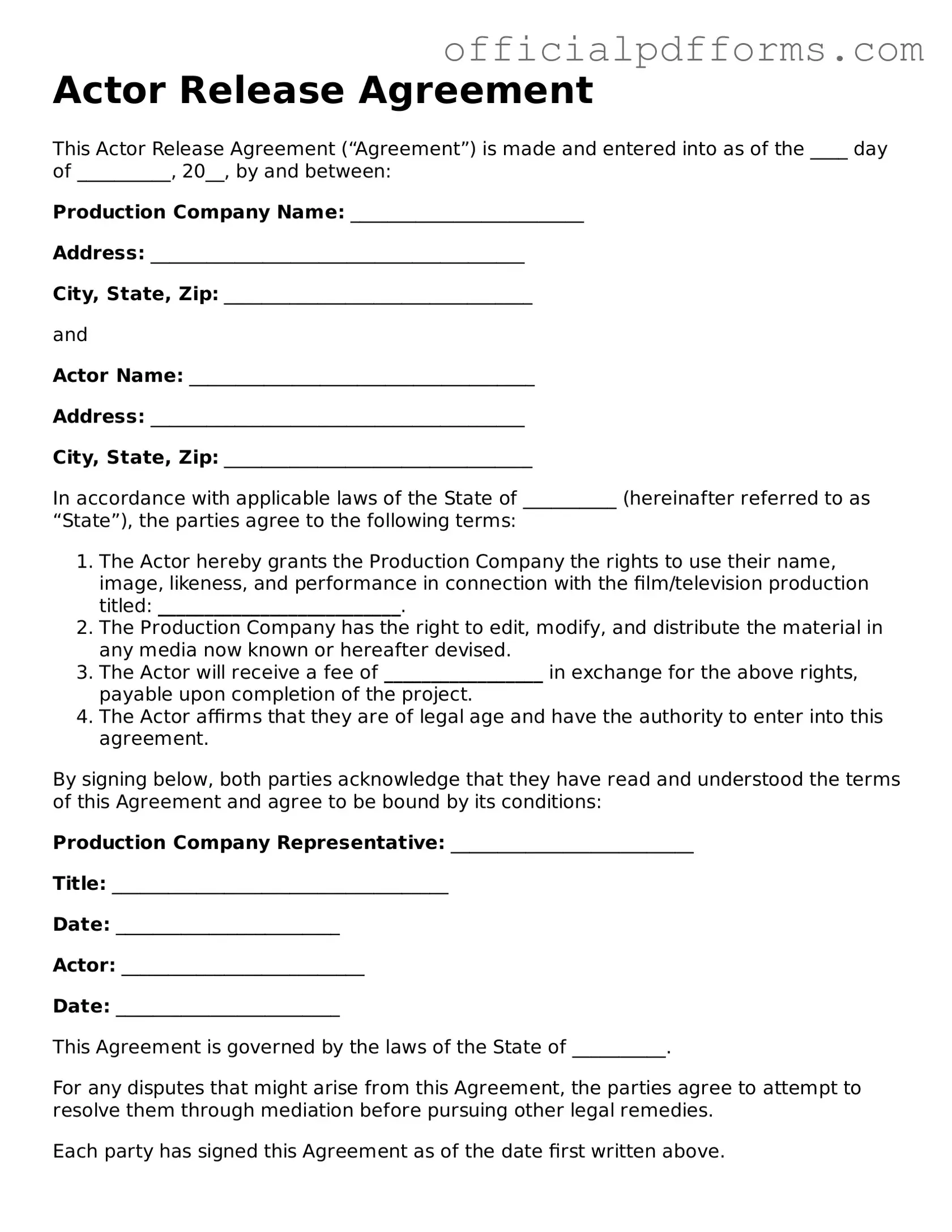An Actor Release form is a legal document that grants permission for filmmakers or producers to use an actor's likeness, voice, and performance in a film or other media projects. By signing this form, actors agree to allow their work to be used without the need for further compensation or approval.
This form is essential for protecting both the actor and the production team. It ensures that the production has the legal right to use the actor's performance, which helps avoid potential disputes or claims in the future. Additionally, it clarifies the terms of use for the actor's contributions.
An effective Actor Release form typically includes the following elements:
-
The names and contact information of both the actor and the production company.
-
A description of the project in which the actor will be involved.
-
The specific rights being granted, including the use of the actor's likeness and voice.
-
Details regarding compensation, if applicable.
-
A statement regarding the duration of the rights granted.
-
Signatures of both parties, along with the date of signing.
Do actors receive compensation for signing the release?
Compensation varies depending on the agreement between the actor and the production company. Some actors may receive payment for their performance, while others may sign the release without additional financial compensation, especially in smaller projects or student films.
Can an actor revoke their consent after signing the release?
Generally, once an actor signs an Actor Release form, they cannot revoke their consent for the use of their likeness or performance. This is why it is crucial for actors to fully understand the terms before signing. However, specific circumstances may allow for revocation, and it is advisable to consult legal counsel in such cases.
If an Actor Release form is not signed, the production team may face legal challenges when attempting to use the actor's performance. Without the release, the actor retains the right to control how their likeness and performance are used, which can lead to disputes and potential legal action.
Templates for Actor Release forms can often be found online through legal websites, entertainment industry resources, or by consulting with a legal professional who specializes in entertainment law. It is important to ensure that any template used complies with local laws and regulations.
